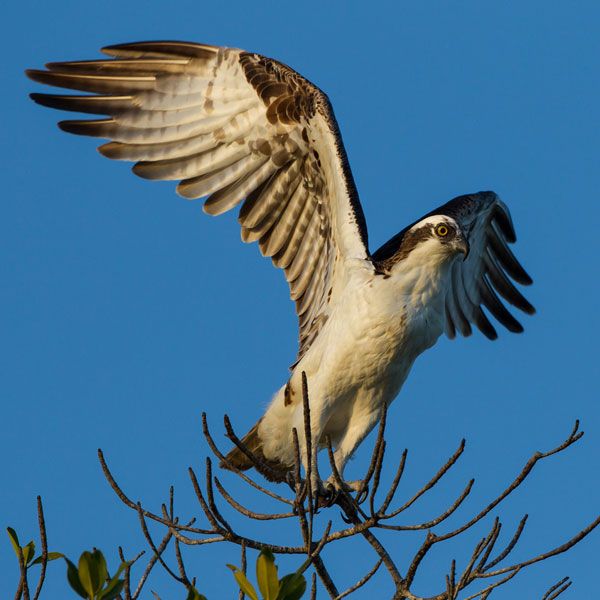Migrating Birds to Pass Over Lighting of Sept. 11 Memorial

On Sunday night, tourists on the observation deck of the Empire State Building may get a view of an entirely different type of traveler, headed south for warmer climes, predicts a new project, called BirdCast, which is working to offer detailed predictions of bird migrations.
A large number of the migrating birds are expected to fly over the city during Tuesday's lighting of the Sept. 11 memorial, the Tribute in Light, BirdCast predicts.
The flocks of birds that could pass through the city in a few days, assuming the weather forecast holds, make up only a small slice of the fall bird migration through the New York City area. That migration begins as early as July and can last into December.
In Manhattan alone, an average of around 250 bird species are spotted each year, and probably close to 175 of these are migrants that make their way over the island once or twice a year, depending on their route, said Andrew Farnsworth, a research associate at Cornell University's Lab of Ornithology.
Not surprisingly, weather has a big influence on migrations. Warm temperatures, scattered rain and wind blowing in the wrong direction will likely keep birds on the ground until Sunday when a cold front is expected to pass through the New York City area. The front is expected to bring conditions that fall migrants favor, in particular, clear skies and tail winds out of the north, according to BirdCast's prediction as of Thursday (Sept. 6). Farnsworth is among those developing BirdCast, a collaboration among biologists and computer scientists.
If the weather forecast holds, on Sunday night, New Yorkers, particularly those in suburban areas, might hear calls of passing Veery, Wood Thrush, Scarlet Tanager, and many other species, according to a BirdCast forecast made on Thursday (Sept. 6). Monday (Sept. 10), too, should be a good day to see a variety of birds in the city's parks.
New birds are expected to continue traveling through, but their numbers will likely decline as conditions change over the course of the week, BirdCast predicts.
Sign up for the Live Science daily newsletter now
Get the world’s most fascinating discoveries delivered straight to your inbox.
The migration will coincide with the Sept. 11 memorial, Tribute in Light, in which two squares of 7,000-watt lights are projected 4 miles into the sky to commemorate the 9-11 attacks. [Remembering the Fallen: A Gallery of Memorials]
Because bright light can pose problems for migrating birds, Farnsworth and the New York City Audubon plan to be on site monitoring the effects on migrating birds.
"Part of the issue is extremely bright lights really short circuit some of the cues birds use when they are migrating at night," Farnsworth said.
Birds can navigate by a variety of means including sensing the Earth's magnetic field, visual cues including the stars, and even sounds. Bright light, however, overwhelms these. The problem is made worse if light gets trapped by fog or overcast skies — "New York City lights up like a candle," Farnsworth said.
As a result, disoriented birds can collide with one another and with structures.
So far, however, the worst looks unlikely Tuesday (Sept. 11).
"It looks likely there will be some substantial numbers of birds passing through the New York City area, while the tribute is happening," Farnsworth said. "But thankfully, it looks like it will be very clear, so the effects of the bright lights will not be as extreme."
The BirdCast project is in its first of four years. Right now, the forecasts rely on the knowledge and intuition of ornithologists such as Farnsworth with feedback from radar sensors that detect bird movements, but the project is building toward developing computer models to automate predictions, he said.
BirdCast also offers U.S. regional predictions.
Follow Wynne Parry on Twitter @Wynne_Parry or LiveScience @livescience. We're also on Facebook & Google+.













